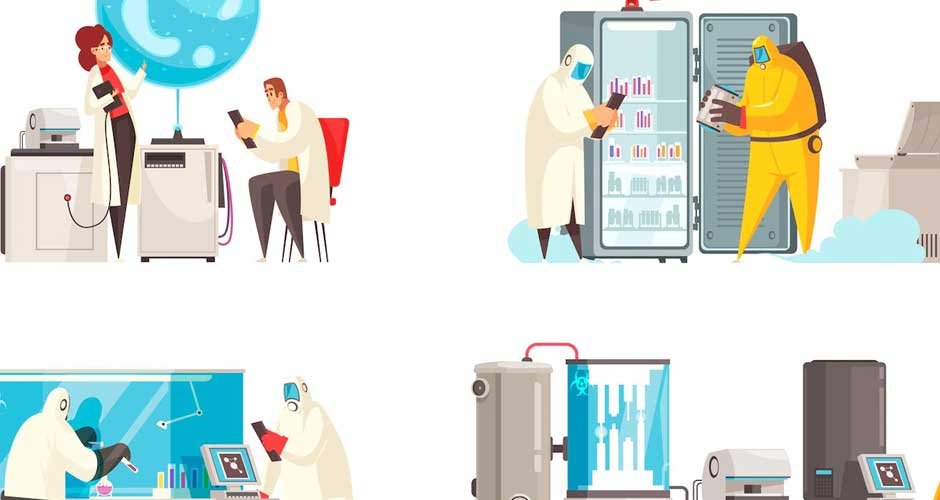Choosing the right lab can be like finding your soulmate. It will affect your work and the people you work with for years. BOD incubators (cooled incubators) are equipped with Peltier thermo-cooling to maintain precise temperature uniformity for bacterial cultures, fermentation studies, plant growth, and Drosophila germination. These units also have hermetically sealed compressors and circuit breakers for safety.
Maintenance
BOD incubators are widely used in wastewater treatment plants and environmental laboratories. They create an isolated chamber with a temperature range of 20degC, ideal for germinating bacterial cultures and other micro-living beings. It also helps test the products at a specific temperature where biochemical oxygen demand can be fulfilled. They are an excellent tool for determining the organic matter and nitrogen levels of wastewater samples. They can be cooled using the refrigeration principle or through the Peltier element. The heating and cooling are controlled by a microprocessor-based circuit based on the proportional integral derivative (PID) principle. A refrigerated incubator features a hermetically-sealed compressor, a circuit breaker to protect from electrical overload, and an easy-to-clean, fully insulated, corrosion-resistant chamber. Thermoelectric cooling technology uses 78% less energy than alternative models and reduces room air conditioning loads by 75%. Each incubator includes a digital temperature set controller, overtemperature limit control, and a one-amp interior outlet for shakers, stirrers, or roller bottles.
Size
A BOD incubator is a specialized lab equipment that measures the amount of oxygen microorganisms consume in water or waste samples. It is used in wastewater treatment plants and environmental laboratories to assess the level of contamination in the environment and the effectiveness of treatment processes. The main difference between a standard incubator and a BOD incubator is that a traditional incubator offers only heating options and usually performs at 37 degrees Celsius. In contrast, a BOD incubator has both cooling and heating options and operates at lower temperatures, such as 10 degrees Celsius. Incubators come in a variety of sizes to accommodate your lab’s needs. The neutronic BOD incubator has a hermetically sealed compressor and a circuit breaker to protect it from electrical overload, and the insulated chamber ensures consistent temperature throughout the experiment. It also features a digital display and a timer for accurate test results. The programmable temperature setting, high low-temperature protection, and simple calibration make this incubator an ideal choice for a laboratory.
Temperature Range
The primary difference between a typical and BOD incubator is its temperature range. While a traditional incubator only offers heating options and is operated at 37 degrees Celsius, a BOD incubator is designed to maintain low temperatures, typically around 20 degrees Celsius, to create the ideal conditions for microorganisms to grow and consume oxygen. The refrigeration system of a BOD incubator uses thermoelectric cooling technology to provide the optimum environment for incubation, eliminating the need for a compressor and saving up to 78% in energy consumption compared to similar models. Stainless steel construction and an internal duct circulation system ensure uniform air distribution, and digital PID temperature controllers allow accurate and consistent control. Whether you are testing sewage or industrial effluents, BOD incubators have various features, including temperature set point selection and high-low temperature protection, so you can be confident that your samples will remain at the correct temperature throughout the incubation process.
Controls
Incubators are designed to maintain the optimum temperature for microbial growth. The device comprises a thermostat to increase the temperature, a biosensor to sense the temperature rise and a cooling system to maintain the desired temperature. A PID control system manages the entire process. Refrigerated BOD incubators are used in hospitals, laboratories, and other research centers to conduct various tests. These include bacterial culturing, plant germination, and insect studies. They are also helpful in determining nitrogen levels in water samples and the amount of organic material present. These units have a hermetically sealed compressor, a circuit breaker to protect against electrical overload, and a fully insulated chamber. Forced air circulation helps ensure uniform temperatures and easy calibration. They are available with dual-lamp fluorescent lighting for plant growth studies, day/night cycles, and programmable illumination conditions. They can also be fitted with an access port for independent sensors and a 2A outlet to support equipment inside the unit.


